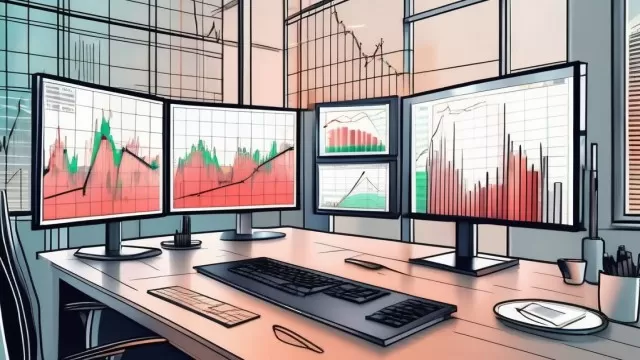


You’ve probably heard the term “prop trading” tossed around if you’ve spent any time reading about finance or the stock market. It’s short for “proprietary trading,” and it’s become a huge deal in modern finance—whether you’re at a specialized prop trading firm, a big investment bank, or even a hedge fund.
Let’s keep it simple: proprietary trading is when a company (the “firm”) uses its own money to buy and sell stocks, currencies, futures, or any other financial product. They’re not making trades for clients—they’re trading for themselves, hoping to pocket the profits. In many cases, these firms have a special team, or a “desk,” set aside just for this kind of trading, separate from the side of the business that works with regular clients.
Why the separation? Well, if you’re managing client money, you have to consider the client’s needs and requests. But with prop trading, the traders can focus fully on one thing: making money for the company. They can take bigger risks, try out different approaches, and move quickly if they see an opportunity.
You might wonder—why risk their own money? The answer is, prop trading is a way for companies to put their own resources and expertise to work. Instead of just earning a small fee for helping clients trade, they can keep all the profits (or losses) for themselves. This can add up to big returns if they know what they’re doing.
But there’s more. Prop trading lets firms “test drive” new strategies or technologies. If a trader comes up with a creative idea, they can try it out with the firm’s money first. If it works, maybe it becomes a regular strategy for the whole company. This kind of flexibility and freedom is one of the reasons prop trading is so innovative—and so important. If you’re interested in becoming a funded trader, you’ll typically start with a Funding, where your trading skills and discipline are tested before you get access to company capital.
Now, let’s talk about how traders actually make decisions—because it’s not just guessing or throwing darts at a stock list. One of the most popular and useful methods is called “technical analysis.”
In plain language, technical analysis is a way to predict where prices might go next by looking at past price movements and trading volumes. Think of it as looking for patterns in the data—a bit like a detective looking at clues to guess what might happen next.
Here are some of the main ideas in technical analysis:
To do technical analysis, you need the right tools. Most traders use some kind of charting software that lets them plot price data, draw lines, and overlay “technical indicators.” Charting software is essential for technical analysis as it provides traders with visual representations of price movements, including the use of tools like Funding Rock, which is tailored to the needs of prop trading.
Another popular tool is candlestick patterns. Originating in Japan, these show how a price moved over a set time period and can reveal shifts in momentum. Some traders also use “Fibonacci retracements” to spot hidden support or resistance.
The best part? You can mix and match these tools to create a trading setup that fits your personal style.
Let’s put it together: why do prop traders love technical analysis? Simple—it helps them make smart, timely decisions.
Of course, it’s not magic. One tricky part of technical analysis is that it can be “subjective.” Two traders might look at the same chart and see different things, leading to different decisions. Also, sometimes patterns that worked before might fail, creating “false signals.” This can lead to losses, so it’s important to have backup strategies and always manage your risk.
So how do you actually use technical analysis in prop trading?
There are a ton of indicators out there—moving averages, RSI, MACD, and more. The trick is to find the ones that work for your trading style. Some traders combine several indicators to confirm their decisions, which helps increase the odds of a good trade.
It’s not enough just to look at numbers. Traders learn to spot key chart patterns, like “head and shoulders,” “double tops,” or “triangles.” They also get good at reading candlestick patterns, which show who’s in control—the buyers or the sellers.
When you use technical analysis well, it can take your trading to the next level.
With a clear plan based on data, you can avoid emotional decision-making. That means you’re less likely to panic or act on impulse—something that can wreck even the best traders.
Technical analysis helps you set clear targets for profits and losses. By using specific levels for stop-losses and profit-taking, you can control risk and let your winning trades run longer, which helps boost your overall profits over time.
Prop trading lets firms (and sometimes individual traders) use their own money and creativity to go after profits. Technical analysis is a crucial tool in this world, giving traders a systematic and disciplined approach, helping them spot market opportunities, and manage risk. Like any tool, it isn’t perfect—but with the right mindset and solid risk management, technical analysis can be your edge in the fast-moving world of prop trading.
Disclaimer: The content provided on this website is for informational and educational purposes only. We do not promote, endorse, or encourage any form of illegal betting or gambling. Readers are advised to check the legal status of betting and gambling in their respective jurisdictions before engaging in any activities. It may be legal in certain regions, but it is the your responsibility to ensure compliance with local laws. We are not liable for any legal or financial consequences arising from the use of this information.
Give Your Feedback